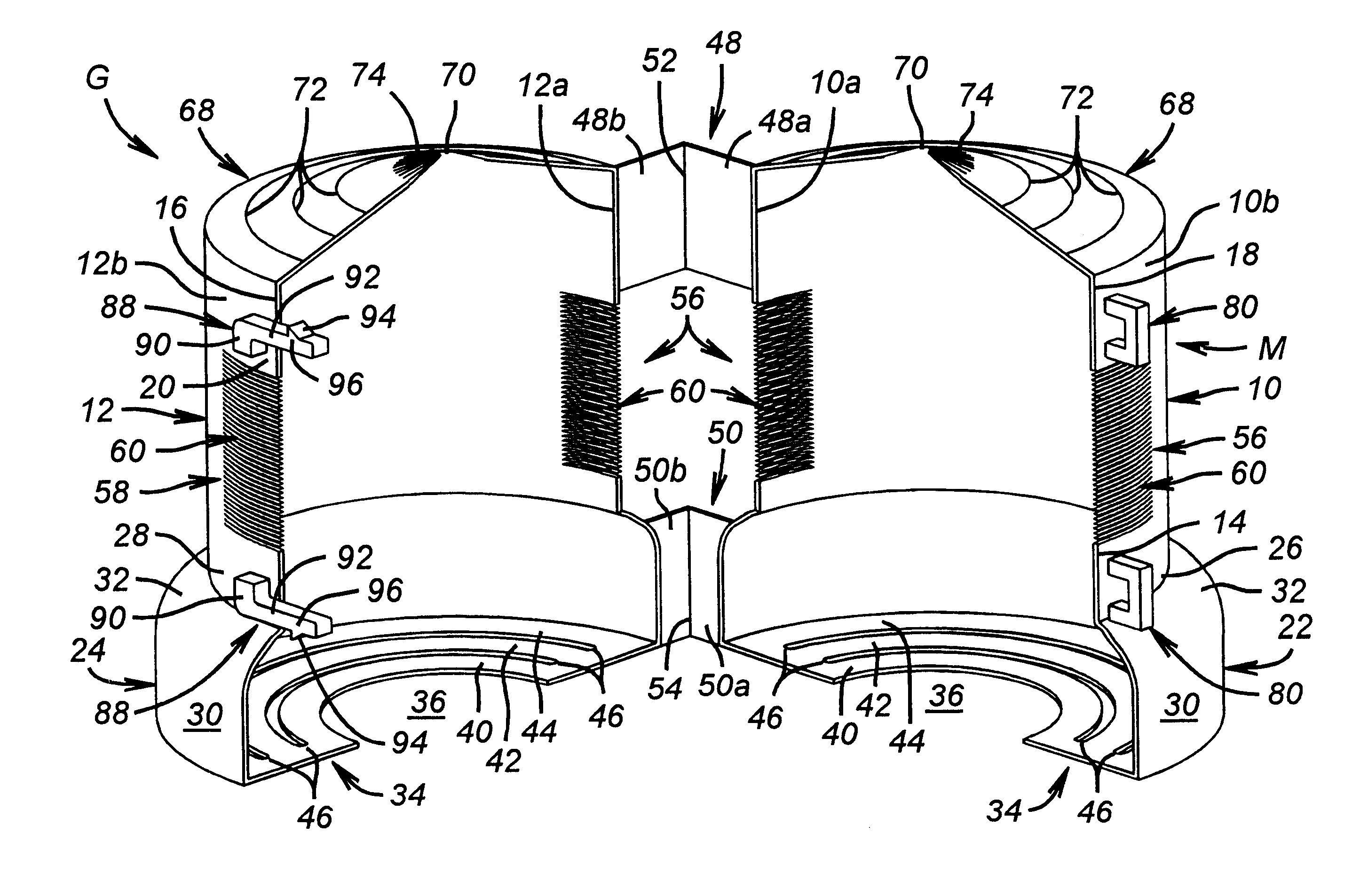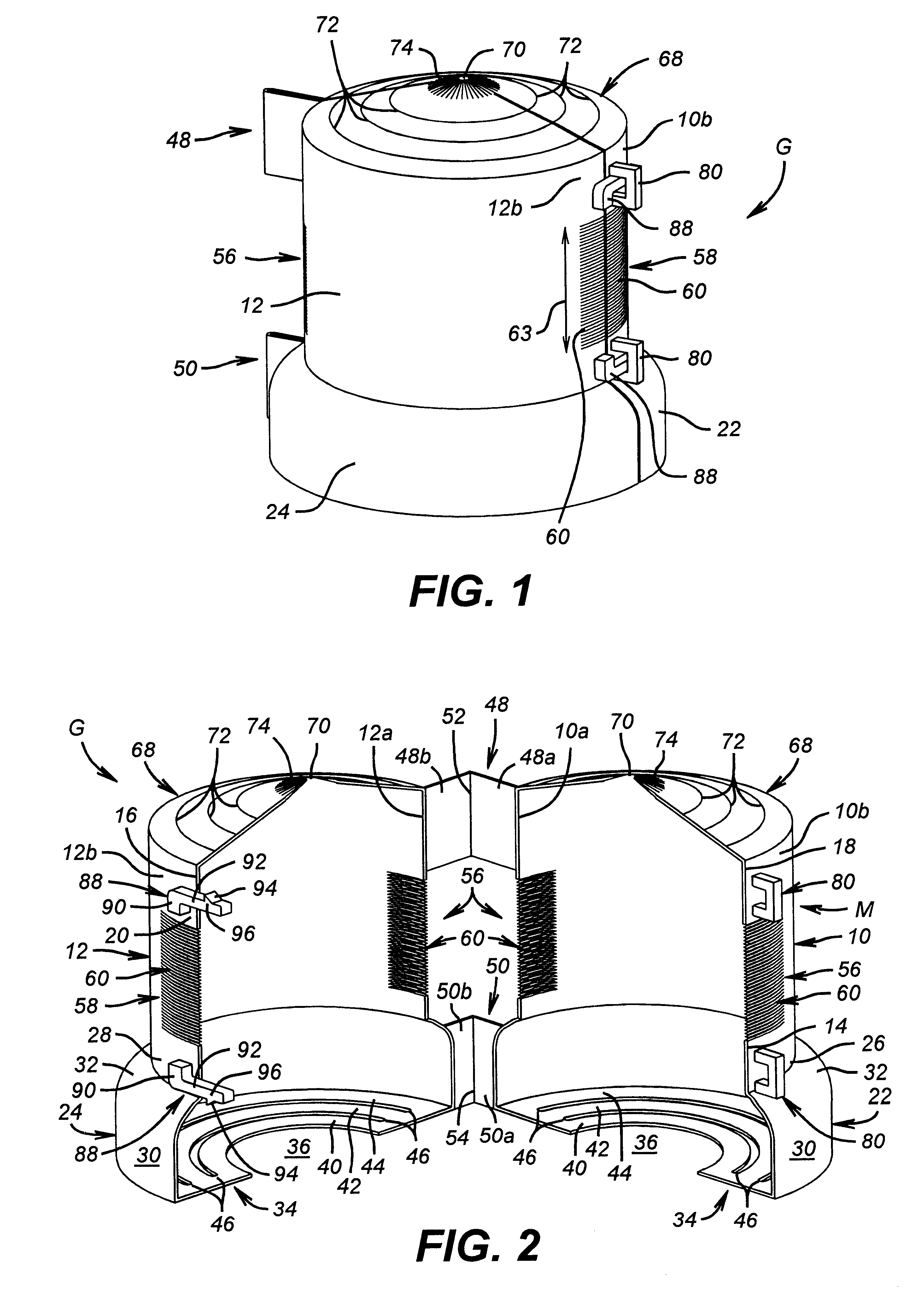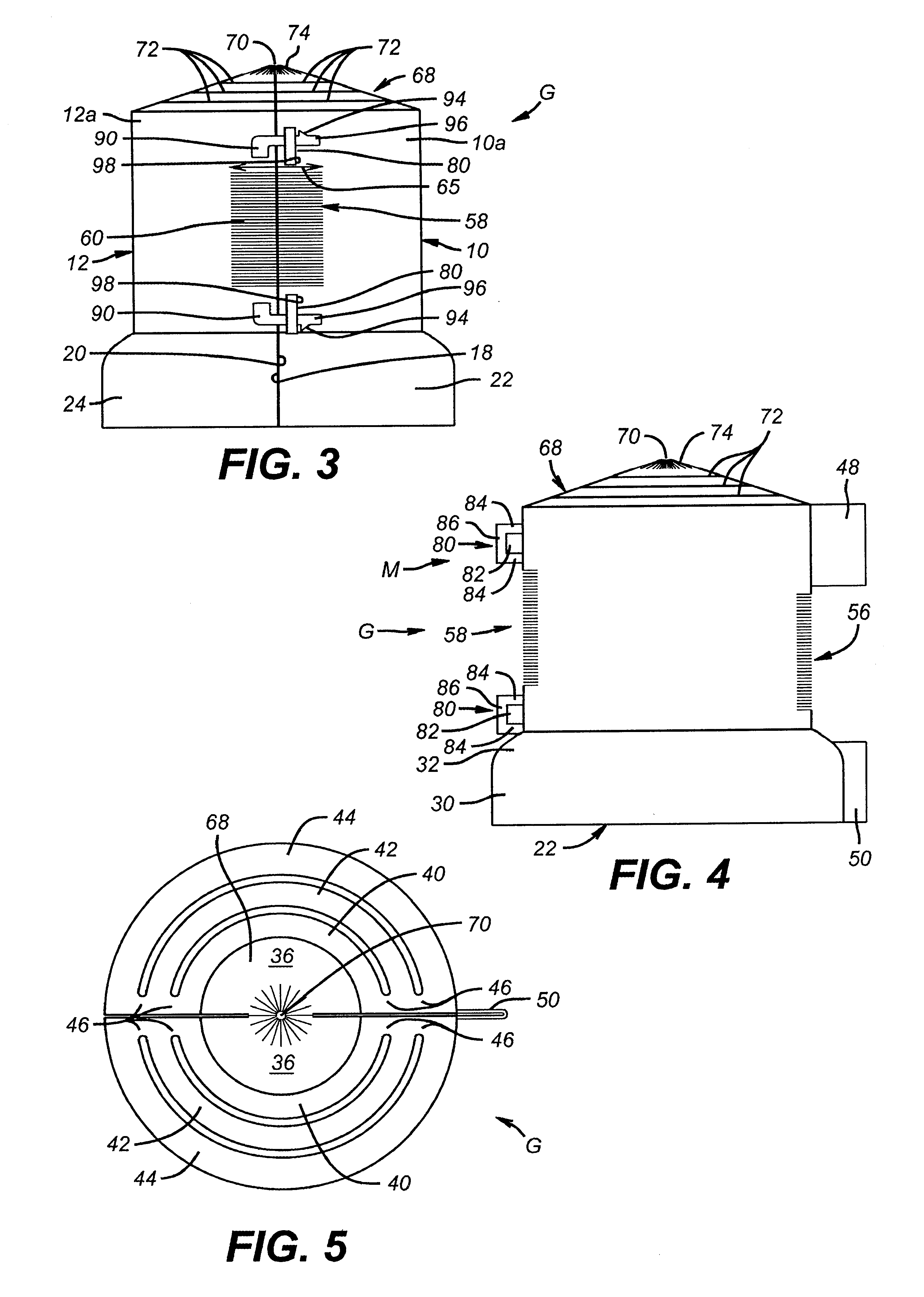Wildlife guard cover
a technology for wildlife guards and covers, applied in the direction of insulated conductors, cables, conductors, etc., can solve the problems of frequent short circuits and consequent power outages, service interruptions that are undesirable for both customers and electrical utilities, and manufacturing facilities with sensitive processes often cannot tolerate even momentary power interruptions
- Summary
- Abstract
- Description
- Claims
- Application Information
AI Technical Summary
Benefits of technology
Problems solved by technology
Method used
Image
Examples
Embodiment Construction
In the drawings, the letter G designates generally a wildlife guard for enclosing a connection to electrical power distribution equipment. The electrical power distribution equipment may be any of numerous forms, including transformers and lightning arresters. Thus, the wildlife guard of the present invention may be installed at locations such as on an insulative arrester bushing A (FIG. 6) on a lightning arrester or an insulated transformer bushing B (FIGS. 7-9) on a power distribution transformer. Typically, different ones of these bushings have different diameters at outer skirt portions S and inner core portions C.
The wildlife guard G is typically formed as an integrally molded unitary piece of a suitable insulative synthetic resin, such as UV stabilized polypropylene. The wildlife guard G includes a first generally cylindrical wall member 10 and a second generally cylindrical wall member 12. The wall members 10 and 12 are generally half-cylinders, having mating contact surfaces...
PUM
| Property | Measurement | Unit |
|---|---|---|
| thickness | aaaaa | aaaaa |
| cross-sectional width | aaaaa | aaaaa |
| cross-sectional width | aaaaa | aaaaa |
Abstract
Description
Claims
Application Information
 Login to View More
Login to View More - R&D
- Intellectual Property
- Life Sciences
- Materials
- Tech Scout
- Unparalleled Data Quality
- Higher Quality Content
- 60% Fewer Hallucinations
Browse by: Latest US Patents, China's latest patents, Technical Efficacy Thesaurus, Application Domain, Technology Topic, Popular Technical Reports.
© 2025 PatSnap. All rights reserved.Legal|Privacy policy|Modern Slavery Act Transparency Statement|Sitemap|About US| Contact US: help@patsnap.com



